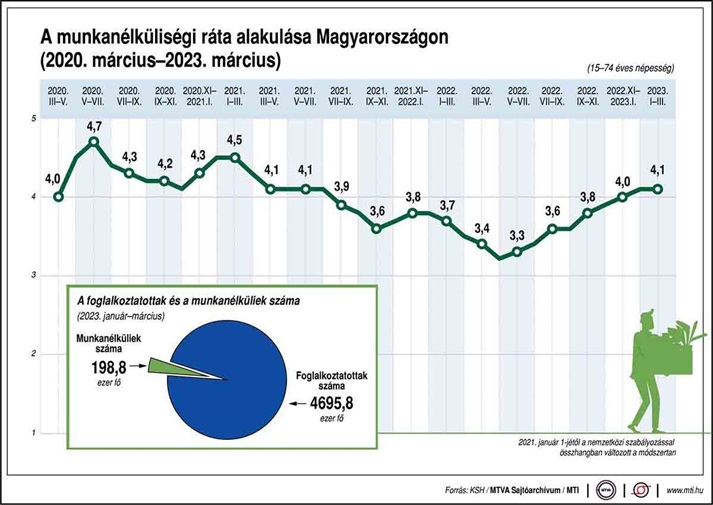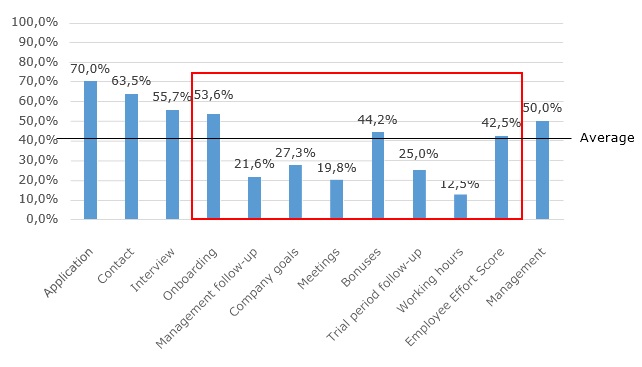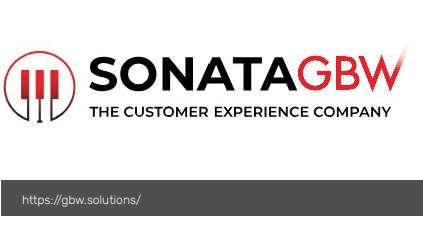
How to increase employee satisfaction and reduce fluctuation
One word that we as managers are going to come across sooner or later, no matter what job we have, what company we work for and what responsibility we have, is fluctuation.
In Hungary in 2023, there have been a mass of articles in the subject of unemployment rates rising again from 2022. Some studies have pointed out that the outflow of intellectual workers has reached historic levels. Analysts agree that the main reason for the worsening fluctuation rates is that the potential labour pool is shrinking year by year, making it harder for companies to find employees.

In white-collar positions, the main reasons for rising fluctuation are overload, lack of the quality of feedback and lack of opportunity for development, and the removal of the home office.
The phenomenon was recognised by our client as a serious threat to the company. We were approached by the client in the spring of 2023 to explore the causes in more depth.
The company is a leading provider of personal loans in Hungary. It offers loans to its customers through bank transfers and unique services.
In 2022, the company had a fluctuation rate of around 35% (!), which means in a sales team of 1,600 people, around 560 employees. Furthermore, during our discussions, they told us that it costs them roughly 300.000 Ft (792,90 Euro) to train a new colleague, which if you do a simple calculation, you get that they lost 168.000.000 Ft (444 103,42 Euro) in 2022.
In addition to the substantial financial expenditure described above, the training also required time and energy, and a third of the company quit over time, forcing our Client to take action: the process had to be stopped. But how?
That is when we were approached to develop a programme to find out the causes of fluctuation. During our discussions, we repeatedly heard that their customers were not happy with the fact that they were seeing different salespeople almost every month, because after some time, customers had become distrustful not only of the employees but also of the company. It soon became clear to us that we needed to improve employee satisfaction first, so that customer satisfaction could improve and trust could be rebuilt.
Employee satisfaction is the key
Why is it essential to increase or maintain high levels of employee satisfaction? Employees who are satisfied with their jobs tend to be more motivated and engaged. They are loyal and committed to the company, and this attitude makes it possible to increase their activity and productivity.
In simple terms: satisfied employees à Greater EBIT
As an employer, it is important to measure employee satisfaction, as job satisfaction has a huge impact on overall quality of life, including social relationships, family relationships and health, which affects job performance, absenteeism and fluctuation at work. Ongoing satisfaction monitoring has a number of benefits: lower turnover rates, higher productivity and a more positive company culture, in addition to increasing loyalty and, as mentioned above, creating engagement from data.
Employee engagement is more about performance. It is not always about the amount of work done; it is more about whether they put passion and energy into their work, are committed to quality and genuinely care about the success of the company. Increased job satisfaction does indeed lead to higher employee engagement, which in turn leads to higher productivity, higher employee retention and all of this leads to a significant increase in EBIT.
The solution is in the details
There are several methodologies that we use for customers/clients and could be implemented for employees: CSAT, NPS, CES, to name a few. However, in this case we had to find a more sophisticated methodology.
At that time, we imagined using undercover "mystery shoppers" who would formally become employees of our Client and participate in monthly in-depth focus group discussions with the managers there, where they could report back on events, developments and their feelings.
The task started off excitingly, as we had to figure out how to implement our ideas. This required careful and extensive preparation on the part of our employees, which we were excited to do. First, we created the employee journey, from application to resignation. The process spanned 6 months, where our 007 agents thoroughly assessed the online job application, contact, personal interview, onboarding processes, fieldwork and the notice period at month 6. In addition, the in-house staff were able to give their opinion on everything, including the functioning of their superiors, their suitability, the way they work together, the functioning of internal systems, the bonus scheme and their workload. In addition to the focus group discussions, a monthly questionnaire was filled in by the probationers, asking them about their processes according to the Client's expected standards.
Results
In December 2023, our six-month project came to an end, with some instructive results. The first interesting experience we had was when our Client shared with us the vacant counties, i.e. where we need to recruit. These were counties where it was essential to find employees as soon as possible. In total, 12 people (who of course were properly pre- screened and prepared) were put on the road to become employees, but only 5 were put on the system despite the fact that there were vacancies and knowing the needs, we applied for people with the right worker profile and salary requirements. It was a surprising experience for us that 7 potential employees were rejected by the company's staff.

We received further insightful feedback from participants later on:
- The recruitment process is slow and difficult
- When applying for a district within Budapest, HR does not ask if a neighbouring district would be suitable for the candidate
- Some of the three differentiated working hours (4-6-8 hours) are not even recruited
- New colleagues do not get to know the team
- Impersonal onboarding programme
- No bonuses available
- Management often unavailable and unsupportive
- They didn’t meet or know they senior managers
- 8 hour workers are underloaded, 4 hour workers are overloaded
- It does not matter if you have fixed working hours, you have to available 8.00-20.00
- Employees find it difficult to take time off and they are sometimes forced to work weekends
In addition to the above, a number of other problems were identified. The company recognized that they have to find urgent solution. Together with our Client, we are now developing a new set of expectations and a new employee journey to optimise the way we do business. Our key objective is to maximise the efficiency, potential and capacity of people and the organisation. We will focus on the key benefits of organisational development, ranging from continuous improvement and increased employee satisfaction to better achievement of business goals.
By identifying problems and addressing them appropriately, we have reduced fluctuation and achieved a multi-million increase in profits for our Client on an annual basis.
By Phantom Shopping, Hungary







